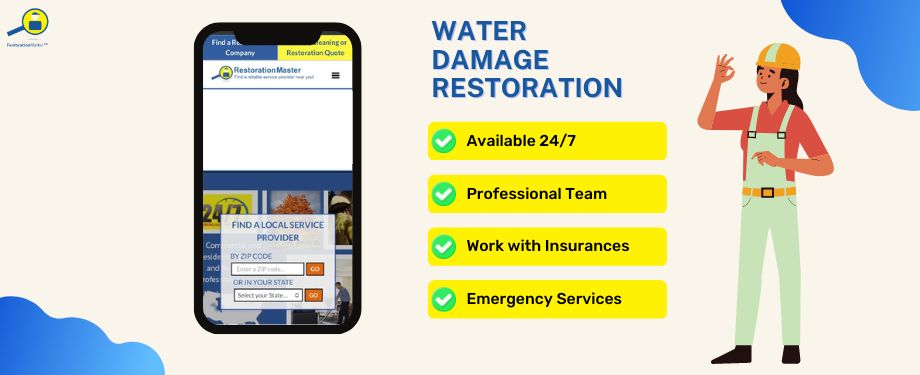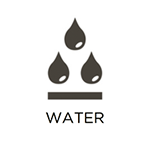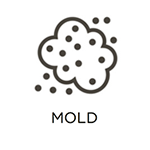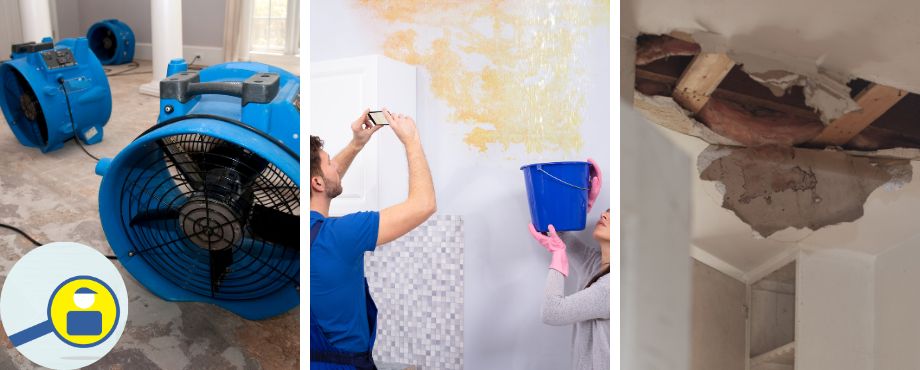RestorationMaster
Serving Daytona Beach, Ormond Beach, Port Orange, Deltona and Volusia County, FL
For over 14 years, your local RestorationMaster partner has served the homes and businesses in Daytona Beach, Ormond Beach, Port Orange, Deltona and the surrounding areas in Volusia County FL. Each of our professionals has been thoroughly trained and qualified to perform restoration services following a broad range of property-damaging disasters. We are also accessible 24 hours a day, seven days a week to respond to emergency calls and avoid more damage, saving you time and money on the restoration process.
Water damage restoration is the process of fixing and recovering from water-related problems in homes or businesses. Whether it’s due to floods, leaks, or natural disasters, water damage can cause significant harm to buildings and belongings. We can help by removing water, drying out affected areas, cleaning and disinfecting, and repairing any damage. Our skilled professionals use special equipment and techniques to get rid of excess water, dry things out and make sure the space is safe to use again. Ourquick response and expertise help people recover from water damage and get back to normal.

Dealing with water damage in your home can be challenging, but you can have peace of mind knowing that you have chosen a reputable industry leader in disaster restoration. We are committed to delivering emergency response services around the clock. Our dedicated office staff is available at all times to answer your calls. Our skilled crews will be swiftly dispatched and will reach your location within 2-4 hours. They will arrive in clearly marked company vehicles, wearing uniforms, and carrying photo identification for your assurance.
Water damage occurs when unwanted water enters and affects a structure or object, leading to various types of harm. It can happen due to a variety of reasons, including natural disasters, plumbing failures, faulty appliances, roof leaks, or even human error.
Causes of Water Damage:
- Flooding: Heavy rainfall, storms, hurricanes, or overflowing bodies of water can cause flooding, leading to extensive water damage. When water levels rise above their normal boundaries, it infiltrates homes, buildings, and other structures.
- Plumbing issues: Burst or leaking pipes, faulty plumbing fixtures, damaged water supply lines, or malfunctioning appliances like washing machines, dishwashers, or water heaters can result in water damage. The water can seep into walls, floors, and ceilings, causing structural damage and promoting the growth of mold and mildew.
- Roof leaks: A damaged or poorly maintained roof can allow water to penetrate into the interior of a building. Missing or broken shingles, cracked flashing, or clogged gutters can contribute to water infiltration during rain or melting snow.
- Condensation: High humidity levels or temperature differences can cause condensation to accumulate on surfaces such as windows, walls, or pipes. Over time, this excess moisture can lead to water damage, mold growth, and deterioration of materials.
- Appliance failures: Malfunctioning or improperly installed appliances that use water, such as refrigerators with ice makers, air conditioning units, or water filtration systems, can cause leaks or water damage if not maintained or repaired correctly.
- Sewage backups: When the sewage system becomes overloaded or experiences blockages, wastewater can back up into homes or buildings. This can be extremely hazardous due to the presence of contaminants and pathogens in the water, leading to severe water damage and health risks.
Flood Cleanup
Flood cleanup becomes necessary when there is a flood event, which happens when there is an excessive amount of water that submerges normally dry land. This can occur due to heavy rain, snowmelt, storms, hurricanes, or dam failures. After the floodwaters recede and it is safe to access the affected areas, cleanup efforts are required to address the damage caused to homes, buildings, infrastructure, and the environment. The extent of the cleanup depends on the severity of the flood and its impact on the surroundings.
Sewage Cleanup
Sewage cleanup is necessary when there is a sewage spill or backup that affects an area. This can occur due to various reasons, such as clogged or damaged sewer lines, sewage system failures, or flooding. Whenever there is an event that results in the release of sewage into living spaces, basements, or other areas, cleanup becomes necessary to address the contamination and restore a safe and sanitary environment.
The effects of water damage can be immediate or develop gradually over time. If not promptly addressed, water damage can compromise the integrity of structures, cause mold growth, damage electrical systems, ruin personal belongings, and pose health risks to occupants. It is crucial to take immediate action to mitigate water damage and restore the affected areas to prevent further harm.
The steps to our Water Damage Restoration Process include:
- Initial Contact– If you have an emergency, you can call us at (386)267-4440. You can also reach us online through our form or website chat. We provide 24/7/365 response, so we’re available any time, day or night. When you contact us, our specialist will talk with you to understand the situation and figure out what needs to be done. We know that dealing with water damage requires quick action, so we’ll send a technician to your home or business as soon as possible.
- Inspection Assessment– Our technicians will come to your home or business and inspect the area affected by water damage. They are well-trained to assess both the cause of the water problem and the extent of the damage. You can help by answering questions about your plumbing, water shutoff valves, and other relevant details. This inspection is an important part of the water remediation process.
- Assess Safety– Our team will do a safety check to see if there is a risk of getting shocked. If there is a lot of water or if it’s close to electrical wires, the technician might need to turn off the power. If the damage is really bad, the technician might also need to make sure the area is strong enough to work on.
- Identify Source– Locate the source of the water and take steps to prevent more water from entering by shutting it off.
- Assess the Water– After ensuring the safety of the area and turning off the water, the technician will inspect the water. This involves checking if the water is contaminated, which will influence the specific steps needed for the remediation process.
- Assess the Water Damage– At this stage, the technician will evaluate the scope of the damage and examine any potential safety issues, such as the presence of lead or asbestos.
- Other Inspections– Lastly, the technician will address any specific concerns related to the situation. For instance, they will identify and relocate furniture that could potentially cause rust stains on carpets.
- Water Removal– After inspecting the area, the next step is to get rid of the water. Our technicians use special equipment like pumps, vacuums, dehumidifiers, and tools to do this effectively. Removing the water quickly is important to prevent mold and further damage. As we work, we also keep checking the area to understand the full extent of the damage. Our goal is to remove the water as fast as possible to reduce the risks involved.
- Area Drying– After removing the water, we need to deal with the remaining moisture in walls, floors, and furniture. If water is left in these areas, it can cause warping, swelling, and other damage. Additionally, long-term dampness can cause mold to grow. To address this issue, we use strong dehumidifiers made for industrial purposes. These help us remove moisture from the air and specific items like floors and walls. We also regularly monitor the progress using special tools to ensure that the process is working well.
- Cleaning– Once the affected area is dry, there may still be dirt, smells, and germs to deal with, especially if the water was contaminated. Our top priority in water damage restoration is making the area safe, and sanitizing it is crucial for that. We will also assess the items that were affected to see what can be cleaned and saved. We use different methods like dry cleaning, wet cleaning, and scrubbing to restore them. If necessary, we will dispose of anything that can’t be saved.
- Water Damage Mitigation– The final step is to repair the water damage as much as possible. This starts after the cleaning is done. We can handle small repairs for the building, and our technicians can help with emergency services like securing the area. If there is significant damage, we will help you find a contractor for the repairs. We will provide a detailed assessment to ensure successful rebuilding.
- Project Completion– In the end, we will ensure that we address all of your concerns regarding the water damage. We will review the assessment with you and provide a clear explanation of the completed work. If you have any questions about the next steps, we will be available to answer them. We understand that dealing with water damage can be stressful, so we are here to make the process as simple and smooth as we can for you.
Contact Us for Water Damage Restoration
If you experience water damage to your property, call your local RestorationMaster partner in Daytona Beach, Ormond Beach, Port Orange, Deltona and the surrounding areas in Volusia County FL at (386)267-4440.
Answers to your Top Water Questions
Q: Is water damage restoration expensive?
A: The cost of water damage restoration can be significant since it involves specialized equipment, expert skills, and comprehensive restoration processes. Factors such as the severity of the damage, the size of the affected area, and the specific materials affected can all influence the overall expense. Moreover, expenses can further rise if mold remediation or structural repairs are necessary. For accurate cost estimates tailored to your unique circumstances, it is advisable to consult with professionals specializing in water damage restoration.
Q: Can water damage be repaired?
A: Water damage is reparable, but the extent of the repair depends on the severity of the damage. Professional water damage restoration services are typically necessary to assess the damage thoroughly and carry out appropriate measures for restoration. These services involve actions like water extraction, drying, dehumidification, and mold remediation to restore the affected areas. It’s important to address water damage promptly to prevent additional harm and long-term consequences like mold formation.
Q: How do you fix permanent water damage?
A: Fixing permanent water damage can be a challenging process. The specific steps to repair it depend on the nature and extent of the damage. In general, the first step is to address the source of the water intrusion to prevent further damage. Then, professional water damage restoration services may be needed. These experts will assess the damage, remove any remaining moisture, dry the affected areas, and restore or replace damaged materials as necessary. In cases where structural integrity is compromised, repairs may involve structural reinforcement or replacement. It’s important to consult with professionals experienced in water damage restoration to develop a tailored plan for fixing permanent water damage.
Q: What should I replace after water damage?
A:
- Electronics: If your phone, laptop, or TV gets wet, it’s usually best to get a new one. Water can mess up the insides of these devices and make them stop working correctly.
- Carpets and rugs: If your carpets or rugs get really wet and don’t dry quickly, they can grow mold and make you sick. It’s a good idea to replace them if they’re heavily damaged.
- Upholstered furniture: Like carpets, sofas and chairs can soak up water and cause mold. If your furniture gets too wet or can’t be cleaned properly, it might be time to get new pieces.
- Insulation and drywall: When water damages insulation and drywall, it can weaken the structure of your home and lead to mold growth. If the damage is severe, you might need to replace the affected parts.
- Flooring: Different types of floors, like wood or laminate, can be harmed by water. If your floors get warped or discolored, it’s a good idea to replace them to make your space look and function better.
Related Services





